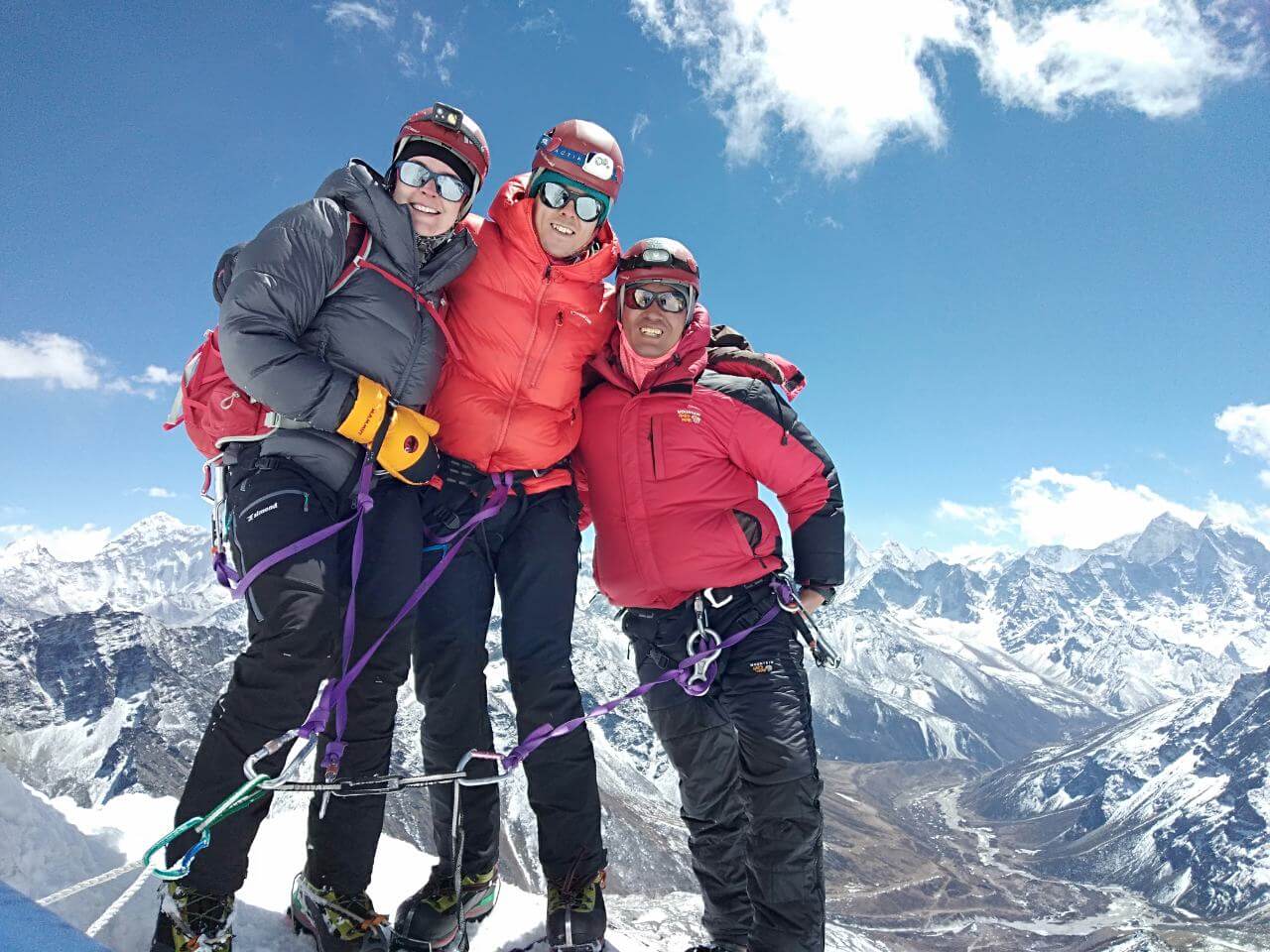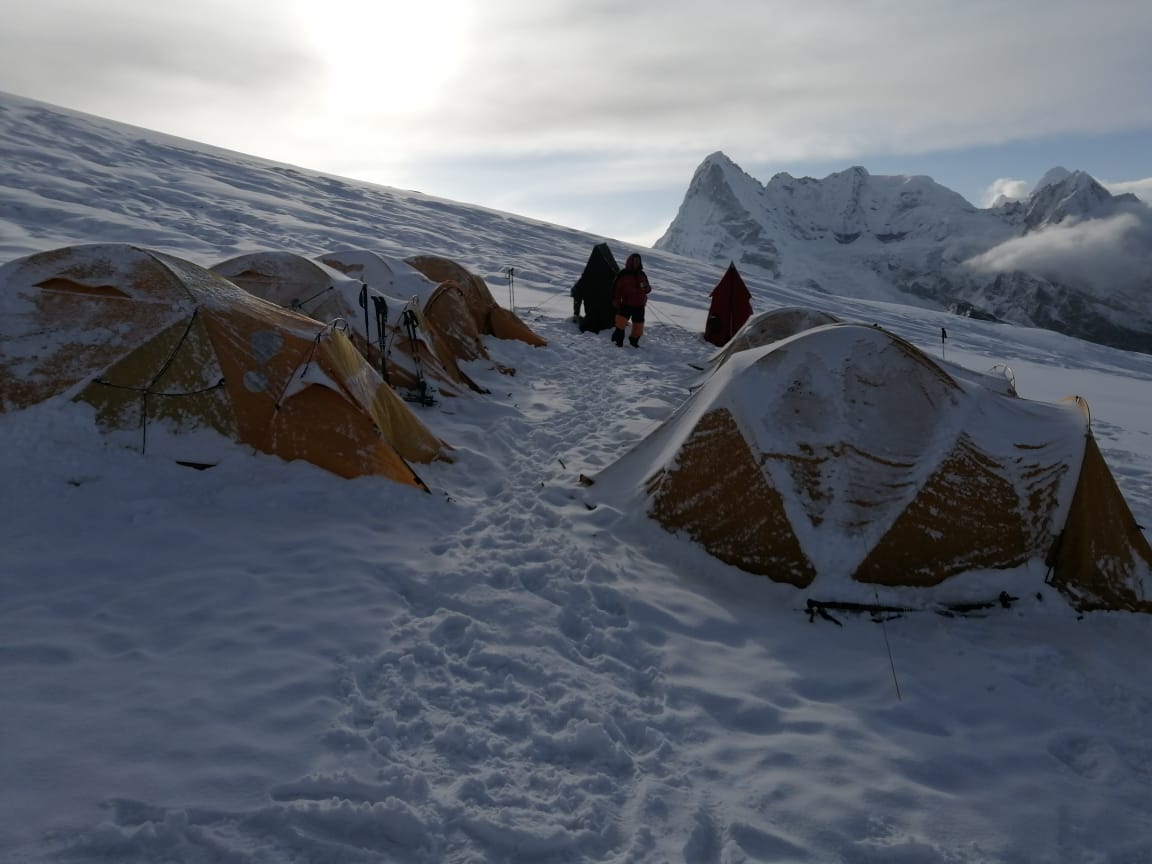Nepal, a jewel in the crown of the Himalayas, has become synonymous with adventure tourism. Its majestic peaks, including eight of the world’s fourteen 8,000-meter peaks, have lured mountaineers and trekkers from around the globe. While the allure of conquering these giants is undeniable, Nepal offers a diverse range of options beyond the renowned eight-thousanders. Nestled amidst the grandeur of the Himalayan range, Nepal boasts a plethora of trekking peaks or climbing peaks, providing a unique and thrilling experience for those seeking a harmonious blend of challenge and natural beauty.
Table of Contents
ToggleWhat are Trekking Peaks?
Trekking peaks are mountain summits that present an exciting challenge to climbers but do not tower beyond 7,000 meters. Usually reaching elevations of 5,500 to 6,500 meters, these peaks offer a perfect starting point for high-altitude mountaineering. Trekking peaks are accessible to experienced hikers with an adventurous spirit, as they often demand less technical expertise than the towering eight-thousanders. With their distinct charms, each of these peaks entices individuals who long for the exhilaration of reaching new heights and the expansive vistas that come with the climb.
The Nepal Mountaineering Association (NMA) is in charge of designating specific summits as category B climbing peaks or trekking peaks.
It is important to understand that a peak’s classification as “Easy” in Nepal does not imply that the trip, ascent, or schedule are particularly simple. It implies you don’t need any prior mountaineering experience, but you still need to be somewhat fit.
Trekking Peaks in Nepal, Why Choose Nepal?
Beyond the draw of its imposing mountains, Nepal has a reputation as a trekking enthusiast’s paradise. Nepal offers a distinct adventure scene because of the large number of trekking peaks in the country. Nepal is an unparalleled location for individuals seeking the ideal balance of beauty and challenge because of the peaks’ accessibility and the breathtaking range of scenery found along the trekking routes. Nepal’s hiking peaks provide a route to breathtaking adventures, regardless of your level of experience or desire to broaden your horizons as a trekker. Let’s now set out to explore the seven popular trekking peaks in Nepal, which symbolize the country’s trekking paradise.
Mera Peak

Mera Peak, standing tall at 6,461 meters, holds the distinction of being the highest trekking peak in Nepal. In the Makalu Region, south of Everest, Mera Peak offers an ideal introduction to mountaineering. The ascent to Mera Central, one of its three summits, is a relatively non-technical climb, making it accessible to trekkers with good physical fitness.
Key Features and Attractions of Mera Peak
- Three Summits: Mera Peak comprises three summits, North, Central and South. Mera Central is the most commonly climbed. Each summit offers a unique perspective and challenge for trekkers.
- Non-Steep Slopes: The ascent to Mera Central is characterized by non-steep slopes, contributing to its reputation as a relatively easier climb. The straightforward route allows trekkers to focus on acclimatization and enjoy the journey.
- Everest Region Panorama: From the summit, trekkers are rewarded with panoramic views of the entire Everest region. The sight includes iconic peaks such as Everest, Lhotse, Makalu, and Ama Dablam, providing a breathtaking spectacle.
Island Peak

Island Peak, towering at 6,189 meters, stands as an iconic and frequently climbed peak in the heart of the Himalayan Khumbu region. Renowned for its stunning vistas and proximity to some of the world’s highest mountains, including Everest, Lhotse, Cho-Oyu, and Makalu, Island Peak offers a captivating blend of trekking and mountaineering experiences.
Key Features and
Attractions of Island Peak
- Khumbu Region Exploration: Island Peak invites adventurers to delve into the Khumbu region, where Sherpa traditions have thrived for generations. The journey unfolds amidst the majestic peaks that have defined the Himalayan landscape.
- Panorama of 8000ers: From the summit, trekkers witness views of Everest and neighboring 8000-meter peaks. Those are Lhotse, Cho-Oyu, and Makalu. The vantage point provides an unparalleled perspective of these majestic giants.
- Frequently Climbed Peak: Island Peak has carved its niche as one of the most frequently climbed peaks in the Himalayas. Its popularity stems from its accessibility and the opportunity to combine the ascent with a trek to Everest Base Camp.
Lobuche East Peak
Lobuche East Peak, with an elevation of 6,119 meters, stands in the Khumbu Region as a testament to the grandeur of the Himalayas. The peak is renowned for its proximity to Everest and offers trekkers and climbers a unique adventure filled with diverse landscapes and cultural encounters.
Key Features and Attractions of Lobuche East Peak
- Proximity to Everest: Lobuche East’s location provides trekkers with unparalleled views of Mount Everest, enhancing the overall trekking experience.
- Diverse Landscapes: The trek to Lobuche East takes you through alpine meadows, glacial moraines, and picturesque Sherpa villages, providing a visual feast for nature enthusiasts.
- Cultural Richness: Encounter the warm hospitality of the Sherpa people and witness their unique traditions as you navigate the trail leading to Lobuche East.
Yala Peak
In Nepal’s Langtang Region, Yala Peak, rising to a majestic 5,732 meters, offers a special fusion of cultural significance and tranquil surroundings. Although this trekking peak is a little lower in elevation, it offers a richer experience with a multitude of cultural interactions and expansive vistas.
Key Features and Attractions of Yala Peak
- Cultural Significance: Yala Peak holds cultural importance for the locals. The trek offers trekkers a chance to witness and participate in the traditional practices of the Tamang people.
- Serene Surroundings: Yala Peak treats trekkers to tranquil landscapes, including lush forests, meadows, and stunning views of Langtang Lirung.
- Comparisons with Other Peaks: Yala Peak, though slightly less challenging in altitude. The trek stands out for its unique cultural elements and the sense of tranquility it imparts.
Pisang Peak
With its impressive height of 6,091 meters, Pisang Peak is a fascinating climb in the Annapurna Region. This trekking peak offers breathtaking views of the Annapurna mountain range and provides a variety of sceneries, cross-cultural experiences, and the exhilaration of reaching a Himalayan top.
Key Features and Attractions of Pisang Peak
- Annapurna Views: Pisang Peak provides trekkers with breathtaking vistas of the Annapurna massif, including Annapurna II, III, IV, Gangapurna, and Tilicho Peak.
- Diverse Landscapes: The trek encompasses a variety of landscapes, from lush subtropical forests to alpine meadows, providing a sensory feast for nature enthusiasts.
- Cultural Encounters: Trek through traditional villages like Pisang and experience the rich cultural tapestry of the local Gurung and Manang communities.
Dhampus Peak
Adventurers are invited to the Annapurna Region by Dhampus Peak, which stands majestically at 6,012 meters above sea level. For those looking to experience a Himalayan expedition, this trekking peak is an enticing option because it offers a harmonic blend of natural beauty, various ecosystems, and cultural immersion.
Key Features and Attractions of Dhampus Peak
- Natural Beauty: Trekkers traversing Dhampus Peak will be treated to breath-taking vistas of the Annapurna and Dhaulagiri mountain ranges, which will be their visual feast.
- Diverse Ecosystems: The journey highlights the Annapurna region’s diverse ecosystems. The journey passes through verdant rhododendron woods, alpine meadows, and rocky terrain.
- Gurung Villages: Explore traditional Gurung villages like Dhampus and interact with the locals. Try to get a sense of their distinct way of life through cultural immersion.
Pokalde Peak
Pokalde Peak, a hidden jewel in the Khumbu Region, rises to a majestic 5,806 meters. The peak also provides breathtaking views of Everest from a strategic place. Trekking peak: this trip combines the exhilaration of a challenging climb with breathtaking views of the surrounding Himalayan giants to create a one-of-a-kind experience.
Key Features and Attractions of Pokalde Peak
- Location: Pokalde Peak’s strategic location affords climbers amazing views of both the surrounding peaks and the famous Everest. Pokalde Peak is situated in close proximity to Everest.
- Everest Panorama: For those who want to climb, the breathtaking views of Everest, Nuptse, Lhotse, and Makalu provide a visual feast.
- Technical Climb: Pokalde Peak offers technical difficulties, which makes it a great option for climbers looking for a more strenuous Everest region ascent.
Preparation for Trekking Peaks in Nepal
Body Conditioning
It is important to make sure you are physically fit before starting any trekking peak experience. Strength, cardiovascular fitness, and endurance are necessary for the ascents to the summits. Follow a pre-trek fitness program that incorporates cardiovascular, strength, and endurance-building exercises.
Essential Gear and Equipment
Common Gear for Trekking Peaks:
- Trekking Boots: Sturdy and comfortable boots with excellent ankle support.
- Clothing Layers: Moisture-wicking base layers, insulating mid-layers, and waterproof outer layers.
- Climbing Gear: Harness, helmet, and ice axe, particularly for peaks with technical climbs like Island and Pokalde.
- Backpack: A suitable backpack with ample space for essentials and a hydration system.
- Sleeping Bag: Rated for the expected low temperatures during the trek and climb.
- Trekking Poles: Providing stability during ascents and descents.
- Crampons and Gaiters: Necessary for navigating icy and snowy terrain.
Additional Gear for Technical Climbs:
- Ropes: Essential for technical sections during climbs.
- Carabiners and Pulleys: For safety and efficiency during roped sections.
- Climbing Helmet: Protects against falling debris.
Training and Skill Development
For peaks like Island and Pokalde, where technical climbs are involved, it’s advisable to acquire some basic mountaineering skills. Consider enrolling in a pre-trek training program or hiring a local guide with expertise in technical climbs.
Altitude Acclimatization
Altitude acclimatization is crucial for a successful and safe ascent. The itineraries for each peak are designed to allow for gradual acclimatization, including rest days at higher altitudes. Pay attention to your body, stay hydrated, and follow the guidance of your trekking team.
Weather Considerations
Understanding the weather patterns of the region during your chosen trekking season is vital. Peaks like Mera and Island are best attempted during the pre-monsoon (spring) and post-monsoon (fall) seasons when weather conditions are more stable.
Choosing a Reputable Guide and Agency
It is crucial to choose a knowledgeable and trustworthy trekking company and guide. They are essential to guaranteeing a secure and well-planned hiking experience. Before choosing, read reviews, get referrals, and confirm the agency’s qualifications.
Trekking Peaks in Nepal will be well within your reach if you carefully plan and attend to these important details.
Conclusion
Take on Nepal’s seven trekking peaks: Mera, Island, Lobuche East, Yala, Pisang, Dhampus, and Pokalde, and set out on a meaningful journey across the Himalayas. Every peak presents a different adventure.
It’s more important to embrace the journey, develop resilience, and establish a connection with nature than it is to conquer summits. Here, in the heart of Nepal, where your life-changing journey commences, stand atop these peaks and join a legacy of explorers. “The mountains are calling, and I must go.” Prepare to enter the Himalayan region, one summit at a time. This is the beginning of your journey.

